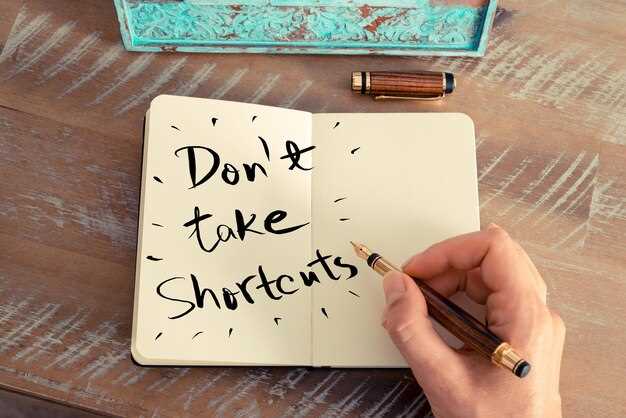Draw a clear line on duration and meeting point: propose 45–60 minutes in a public cafe with an easy exit. People take most cues from schedule and tone; if you have limited time, say so up front to set the right expectation and reduce awkwardness.
Common mistakes and precise fixes: when you’re tempted to replay past relationships, compress history to one sentence and redirect to current interests. If they seem pressured or withdrawn, stop pushing for physical closeness and ask permission before escalating. Avoid turning the conversation into a monologue about dealbreakers – convert statements into questions so values emerge together. If talk goes down into negativity, switch subject or suggest a short activity to reset energy.
Signals of success and concrete next steps: youve laughed together, logistics match, and youd check calendars without hesitation – that combination is a practical sign to propose a low-commitment follow-up. If you feel lonely or down after the meetup, pause before committing; ghosting hurts both people. If youre genuinely attracted and see shared priorities, say you’re interested in something more serious, list two non-negotiable dealbreakers, and ask the other person to do the same. Think in terms of small experiments: one additional short meet is the cheapest way to test a match and find out if youre both happy together.
Choosing the Wrong Setting – Don’t Let Distractions Ruin a Good Time
Choose a quiet venue with ambient noise under ~60 dB, seating that lets you face each other, and a 60–90 minute plan so neither of you feels trapped.
- Why this matters: between loud music and crowded bars, most people felt unable to connect; you want an environment where both verbal and physically expressive cues register without shouting.
- Quick sign to act: if youve raised your voice more than once, thats a clear cue to move – that pattern predicts lower satisfaction for future dates and relationships.
- Right restraint: keep phones on silent and out of sight; nothing breaks rapport faster than scrolling during a conversation.
Specific places to prefer and avoid:
- Best: small coffee shop with tables spaced ≥1.5 m apart, quiet wine bar with booths facing each other, park bench with a short, safe walk option.
- Avoid: busy sports pubs, loud nightclubs, food halls with standing room only – these increase distractions and decrease true listening.
Practical sequence to follow if the setting feels off:
- Signal: note when they look away repeatedly or pause–these are a sign conversation isn’t landing.
- Offer two options: “We can move to a quieter table, or take a short walk.” Presenting both choices reduces pressure and shows consideration.
- If they accept, then transition within 10 minutes; if they decline, end after one more meaningful topic to protect mutual time and desire to meet again.
Short scripts to use: “This place is loud–wanna walk to the café next door?” or “I’m having trouble hearing you; would you like to try a quieter table?” Use please and a smile; no–please avoid dramatics.
- Timing rule: for most first returns, keep the outing under 90 minutes so you leave them wanting more rather than exhausted.
- Same cues for future planning: note whether they suggest movement or keep staying; that choice reveals comfort levels and helps you make the right next move.
- Record one concrete takeaway: after the meeting, jot where you felt most comfortable and what physical factors (lighting, noise, seating) influenced that feeling–use that when planning future dates again.
Match the venue to shared interests – quick checklist
Pick a venue matching one clear shared interest and set the primary goal: chat-focused, active, or intimate; the best pick answers what excites both people and shows if the evening felt easy or truly electric.
Noise level: Choose a setting where background sound won’t drown conversation. Keep venues with loud music off the plan unless physical activity is the main aim, since loud rooms push down conversational intimacy and make it hard to read cues.
Energy match: If youve bonded over hiking, pick an outdoor route; if books or film are your shared thing, choose a quiet cafe or screening. Momentum should match interest so both feel excited, not tempted to leave early.
Timing: Pick a time that fits both schedules. A 60–90 minute slot suits casual meetings; two hours fits more serious intent. If unsure, send a tentative end time and be ready to extend if the vibe stays strong.
Boundaries & dealbreakers: Ask what dealbreakers exist and please state yours aloud. Both people should know where physical contact sits on the list, including consent limits, so nobody feels pressured or surprised.
Logistics: Order travel and seating details ahead: arrival options, parking, nearby restrooms. Take a moment to map routes so you can get down to the activity fast and keep awkward pauses minimal.
No hoo-ha: Skip over-the-top venues that create forced drama; low-fuss spots let natural connection emerge. The bottom rule: simplicity lets you see what truly clicks without props or production.
Follow-up plan: If the evening felt good, send a short thank-you and propose when to meet again or suggest future dates. If youre unsure, be clear about dealbreakers so both parties can decide whether to try once more or move on.
Personal check: Before you leave, ask yourself what you felt, what youd like next, and whether intimacy or a slow build suits your comfort. If youve been tempted into speed or pressure, slow the pace and protect your boundaries.
Noise and seating: pick a spot where you can hear each other
Pick a seat where ambient noise stays below 70 dB – ask staff for a corner table 2–3 m from speakers or kitchen; if youre serious about conversation, reserve early (17:30–19:00) on weekdays and choose the quiet side.
this isnt a webinar: both people must hear tone, pauses and small laughs. Measured levels: normal conversation ≈60 dB, conversational strain begins at 70–75 dB, loud restaurants 75–85 dB, bars and live music 85–95+ dB. Most subtle cues are lost over 80 dB, making sincerity and honest connection hard to read and reducing the feeling of being heard.
If ambient sound is over 75 dB, dont keep talking louder; either move to a quieter corner, step outside briefly, or suggest a short walk. theres no shame in asking staff to relocate you – please request a table away from the kitchen and the band hoo-ha; loud interruptions become dealbreakers fast and arent salvageable by better small talk. Place drink order first to reduce staff traffic.
Seat orientation and physical distance: choose 45° or side-by-side seating to reduce glare and physical strain; face-to-face across a table wider than 90 cm reduces seeing facial microexpressions, so side-by-side or 30–45° increases the chance both persons feel connected. You might prefer a banquette corner if you value privacy, but avoid long tables where eye contact isnt possible. Keep 60–120 cm between chairs for intimate but non-intrusive proximity.
Topics and pacing: start with low-effort topics for the first 10–15 minutes, then shift to deeper themes if both are more engaged. If a person felt bored, kept raising their voice, or signalled discomfort, flag that as a cue to change venue or wrap up. If youre attracted and still connected after 30–40 minutes, propose meeting again; if you felt repeatedly unheard, that match may be over.
Practical checklist:
| Venue type | Typical dB | Best seat | Recommended time |
|---|---|---|---|
| Coffee shop | 50–65 dB | window table facing each other or 45° | 10:00–11:30 or 14:00–16:00 |
| Casual restaurant | 60–75 dB | corner booth away from kitchen | 17:30–19:00 weekdays |
| Lounge/bar | 75–95 dB | quiet side room or outdoor patio | early evening weekdays |
| Live-music venue | 90–100+ dB | avoid for first chats | not recommended |
After: re-evaluate – if most of the interaction felt strained or the person kept shouting, dont schedule again. If you both laughed, leaned in, and felt connected, send a short, honest follow-up message referencing a specific topic from the meeting; that signals youre paying attention and increases the chance of seeing each other again.
Time of day and energy levels: choose when you’ll both be at your best
Schedule the meet when both report at least 70% energy: morning people 9:30–11:30, afternoons 15:00–17:00, evenings 18:30–21:00; limit initial encounters to 60–90 minutes to prevent cognitive and physical fatigue and preserve conversational momentum.
Favor a setting like a quiet café or a short walk when choosing activities: if either felt down earlier, pick a calm spot and order something simple; if both are high-energy, pick a casual active plan (mini hike, bowling, museum) so body motion supports flow. For people considering intimacy, check honest signals first – matching desire and physical readiness matters more than chemistry on paper – and avoid situations that make either person feel pressured.
Watch these signs energy is waning: short replies, drifting eye contact, face turned away, frequent phone checks, slumped posture or yawns. If any sign appears, ask a direct question and then respect the answer; if responses arent enthusiastic, offer to end early or pick a next time. If you went in with the same expectations and both still feel connected and happy, extend the plan; if one felt lonely or out of line with the other, pause and be serious about rescheduling so neither feels rushed or confused about what happened and how it felt.
Places to avoid on date two and why (crowds, long lines, loud TVs)
Pick a quiet table at a small bistro or a low-traffic wine bar: conversation should flow without shouting and you can read body language clearly.
-
Crowded venues (concerts, weekend markets, busy bars): ambient noise regularly hits 80–95 dB, which destroys speech intelligibility above ~70 dB. This environment kills intimacy, can make one feel lonely in a crowd, and may send the serious signal that you didnt prioritize connection.
-
Long queues and walk-up counters: lines over 20 minutes increase impatience and phone-checking; waits over 30 minutes tempt people to bail or order fast food instead of sharing a slow meal. If either of you has felt rushed before, dont repeat that pattern – choose a place with reservations or predictable wait times.
-
Sports bars and venues with loud TVs: TV-driven sound spikes (85–100+ dB during highlights) force shouting, interrupt eye contact, and hide subtle physical cues that tell you whether someone is attracted. If you want to test chemistry, loud screens arent where intimacy grows.
-
Festivals, food halls, busy transit hubs: high foot traffic reduces privacy and increases sensory overload; at the bottom, these spots make revealing conversation and genuine desire unlikely. They also create easy dealbreakers – people who arent comfortable in crowds will withdraw.
-
Movie marathons or drive-ins where talk is impossible: silence prevents you from assessing tone, humor, and whether either of you is truly interested in more. A single-screen movie is fine for later, but dont make it the main plan if your goal is connection.
Practical rules: avoid plans with expected waits over 20 minutes, skip venues with TVs on every wall, and dont pick events with peak crowd density (Friday nights, big game days). If your partner says “no–please” to a noisy option, respect that – it takes courage to speak up, and the best measure of success is whether both people feel comfortable and attracted.
Common mistakes in making location choices stem from wanting novelty over connection; this can send mixed signals about desire and priorities. Choose where conversation is possible, order something shareable if it helps loosen up talk, and aim for environments that give you a better chance at intimacy again rather than places that felt awkward the first time.
Rushing Physical Intimacy Before You’re Sure It’s the Right Person
Set a firm personal line: pause and ask for clear verbal consent before you move into anything physically intimate.
If youre excited, look at the other person’s face and body language; a quiet smile, steady eye contact and mirrored posture often mean comfort, while loud, rushed moves usually signal retreat. If both lean in and mirror each others pace, dont let one person lead unchecked; you can take a small next step if both agree, otherwise walk away from escalation.
Write short scripts to send or say: whats comfortable for you?; ive enjoyed meeting you, youve made me feel chemistry, would youd prefer to keep things low-key tonight or meet again later and do something together? Have a short stop-word you can use so boundaries are honored immediately.
bottom rule is simple: protect yourself first and set a clear emotional order – consent, clarity, comfort. It really helps to name what you like and what youre not ready for; serious conversations about limits correlate with higher relationship success.
After any contact, check in: ask how they felt, share your own feeling, and confirm youre both on the same page before going again. If there is discomfort there, say thats not for you and pause to revisit conversations before progressing further.
Set clear physical boundaries beforehand – short scripts to try
Tell the other person before meeting: “Before our first meetup I want to be clear about physical boundaries – I dont kiss or go home with someone unless we both agree.” This sends a sign that youre serious and gives the match a chance to think and respond without pressure.
Pre-send texts to set the tone: “Im excited to meet but plan to keep things quiet and platonic at first; if we both feel chemistry later we can discuss next steps.” Send this the day before so theres no surprise in person.
If youre worried about walking home alone, use: “If we walk after coffee I prefer to walk myself; I wont go somewhere private tonight.” That line protects you physically and makes the other person choose whether they match your boundary.
If someone crosses your limit face-to-face, be firm and simple: “No–please stop.” If youve already said no and the touch continues, add: “I said no – youre over my line; I need space.” Those exact words create a clear sign others cant misread.
When youre testing mutual interest without pressure, try: “I like our chemistry and think youre great, but Im not ready to be physically intimate before we both agree.” This means youre open but sets the order of consent: talk, then touch.
If youre making plans again after a waning connection, text: “I felt like things cooled last time; before we meet again I want to confirm whether youre looking for something serious or casual.” That message helps whether the other person felt the same and keeps you from having to guess.
Keep scripts short so you can actually use them – practice in a quiet mirror until you have the courage to say them face-to-face. If youre not sure how to phrase boundaries or want research-based tips, see consent resources and webinars at RAINN: https://www.rainn.org/articles/consent


 Biggest Mistakes That Ruin a Second Date — How to Avoid Them">
Biggest Mistakes That Ruin a Second Date — How to Avoid Them">


 Expert Dating Tips for Women Over 50 – Confidence & Success">
Expert Dating Tips for Women Over 50 – Confidence & Success">
 Is Marriage Dying or Changing? Trends, Causes & Future">
Is Marriage Dying or Changing? Trends, Causes & Future">
 Top 10 Communication Tools for Every Relationship — Ep. 200">
Top 10 Communication Tools for Every Relationship — Ep. 200">
 9 Feminine Qualities Men Love, According to Men Themselves">
9 Feminine Qualities Men Love, According to Men Themselves">
 Why Anxious and Avoidant Attachment Attract Each Other">
Why Anxious and Avoidant Attachment Attract Each Other">
 Gottman Couples Therapy – How to Build a Stronger Relationship">
Gottman Couples Therapy – How to Build a Stronger Relationship">
 Constant Arguing in a Relationship – Normal or a Sign It’s Over?">
Constant Arguing in a Relationship – Normal or a Sign It’s Over?">
 How Your Childhood Can Affect Your Marriage – Signs, Causes & Healing">
How Your Childhood Can Affect Your Marriage – Signs, Causes & Healing">
 15 Signs You’re Intellectually Compatible With Your Partner">
15 Signs You’re Intellectually Compatible With Your Partner">
 5 Proven Secrets to Make People Like You Fast | Social Skills">
5 Proven Secrets to Make People Like You Fast | Social Skills">